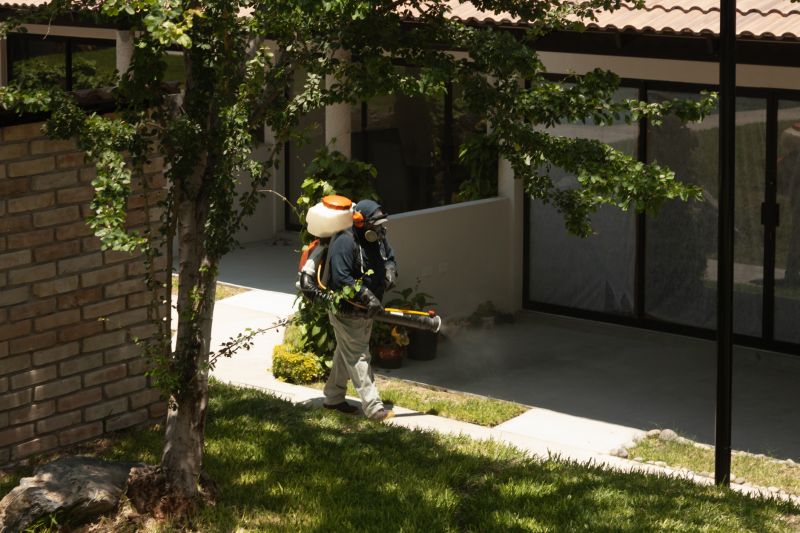Leading Vapor Barrier Repair Tools For Do-It-Yourself Projects
Find the essential tools and materials needed to successfully complete vapor barrier repairs with confidence.
 Vapor barrier repairs are essential for maintaining the integrity of moisture control systems in various building applications. When a vapor barrier becomes damaged, compromised, or dislodged, it can lead to increased humidity levels, mold growth, and structural deterioration. Selecting the right products for vapor barrier repairs ensures a durable and effective seal, helping to prevent moisture intrusion and maintain indoor air quality. Repairing or replacing vapor barriers requires careful consideration of the materials used, the specific environment, and the extent of the damage.
Vapor barrier repairs are essential for maintaining the integrity of moisture control systems in various building applications. When a vapor barrier becomes damaged, compromised, or dislodged, it can lead to increased humidity levels, mold growth, and structural deterioration. Selecting the right products for vapor barrier repairs ensures a durable and effective seal, helping to prevent moisture intrusion and maintain indoor air quality. Repairing or replacing vapor barriers requires careful consideration of the materials used, the specific environment, and the extent of the damage.
Top Overall Option
High-Performance Vapor Barrier Repair Tape
A versatile and durable repair tape designed to adhere securely to a variety of vapor barrier materials. It offers excellent elasticity, weather resistance, and long-term adhesion, making it suitable for patching small tears and sealing edges. Its ease of application and reliable performance make it a popular choice for both professional contractors and DIY enthusiasts.
Types of Products For Vapor Barrier Repairs
Self-Adhesive Repair Tape
Flexible tapes that adhere directly to vapor barrier surfaces, ideal for quick patches and sealing small damages.
Liquid Sealants
Fluid-based sealants that can be applied with a brush or roller to fill cracks and reinforce damaged areas.
Repair Patches
Pre-cut or custom-sized patches made of compatible materials for covering larger tears or holes.
Spray Adhesives
Spray-on adhesives that bond patches or repair materials to existing vapor barriers for a seamless fix.
Butyl Rubber Tape
Heavy-duty sealing tape with excellent adhesion and flexibility for sealing seams and joints.
Polyethylene Sheeting
Reinforced polyethylene sheets used for large-scale repairs or replacements of vapor barriers.
Foam Sealants
Expanding foam products that fill gaps and cracks, providing insulation and moisture barriers.
Butyl Tape
Flexible, waterproof tape suitable for sealing seams and small punctures in vapor barriers.
EPDM Rubber Sheets
Durable rubber sheets used for large repairs or replacements, compatible with various vapor barrier types.
Heat-Activated Patches
Patches that require heat to activate adhesive properties, providing a strong seal for damaged areas.
Popular Choices
Widely used for quick fixes, this tape offers reliable adhesion and flexibility for sealing tears and seams.
Commonly chosen for filling cracks and reinforcing damaged areas, providing a seamless barrier.
Popular for covering larger holes, these patches are easy to apply and durable.
Favored for their ease of use, spray adhesives bond patches securely and quickly.
Known for its waterproof qualities and strong adhesion, this tape is frequently used in repairs.
These sheets are often selected for large-scale or structural repairs due to their durability.
Popular for filling gaps and cracks, providing both insulation and moisture resistance.
A common choice for extensive repairs, offering longevity and compatibility with various vapor barriers.
Chosen for their strong adhesion once heated, suitable for professional repairs.
Repairing vapor barriers involves more than just patching holes; it requires selecting compatible materials that can adhere well to existing surfaces and withstand environmental stresses. Proper surface preparation, such as cleaning and drying, is crucial for optimal adhesion. The repair process may involve various products, including tapes, sealants, patches, and specialized adhesives, each suited to different types of vapor barriers and damage scenarios.
Understanding the different repair products available can help ensure a long-lasting fix. Some products are designed for quick patching, while others provide more comprehensive sealing solutions for larger areas. It's important to evaluate the product's compatibility with existing materials, ease of application, and durability. Properly repaired vapor barriers contribute significantly to controlling moisture and protecting building structures over time, making the right choice of repair products a vital aspect of maintenance.
Key Buying Considerations
- Compatibility with existing vapor barrier materials to ensure proper adhesion.
- Extent of damage to determine whether patching or full replacement is necessary.
- Environmental conditions such as humidity, temperature, and exposure to elements.
- Ease of application based on your skill level and available tools.
- Durability and resistance to moisture, UV rays, and temperature fluctuations.
- Flexibility of the repair product to accommodate building movement or expansion.
- Compatibility with insulation and other building materials nearby.
- Size and coverage area of the product to match repair needs.
- Long-term performance expectations and maintenance requirements.
- Cost-effectiveness relative to the scope of the repair project.
- Availability of the product and ease of sourcing replacements if needed.
- Safety considerations, including VOC content and ease of handling.
- Adhesion strength and ability to seal seams, joints, and punctures effectively.
- Application method suitability for DIY or professional use.
- Manufacturer's instructions and recommended usage for optimal results.
This content contains affiliate links. We may earn a commission if you make a purchase through these links, at no additional cost to you.
